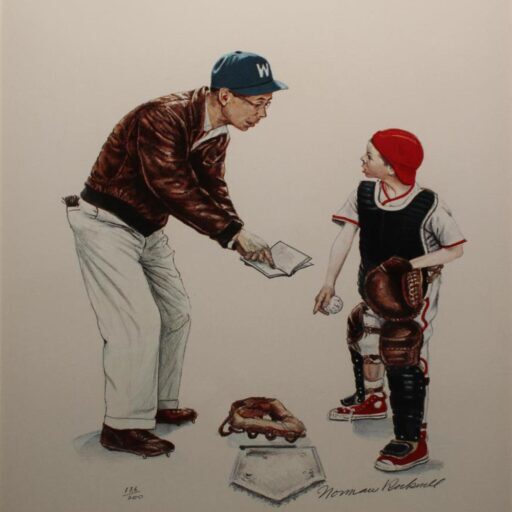Many thanks to Eric and FanGraphs for posting recent video of the prospects I’ll be diving further into with this post.
Colt Keith, 1B/3B, DET
Keith is a left-handed hitting corner infield prospect who likely ends up at 1B defensively. He has a sturdy build with plenty of strength on the frame. The Tigers drafted Keith in the 5th round of the 2020 draft out of Biloxi HS in Mississippi. His first season in pro ball was in 2021 where he covered three levels (RK, A, A+) and tallied 270 PA’s and slashed .286/.396/.393 along with a 41/66 BB/K. A shoulder injury abbreviated his 2022 season where he accumulated 216 plate appearances in A+ ball and slashed .301/.370/.544 with a 22/42 BB/K ratio. He also scorched the Arizona Fall League in 2022, getting 80 PA’s, posting a 1:1 BB/K ratio and a 1.004 OPS.
Keith has advanced bat-to-ball skills to go along with solid bat speed in his offensive profile. It’s a swing that looks top-hand dominant, but he does a nice job of being on time consistently. The red flag in Keith’s swing for me is the low slot-entry with his hands. Long explanation short, a high slot-entry is if a batter’s hands are shoulder-height or higher before they start forward. A low slot-entry then would be the inverse of that, which is a trait Keith exhibits in his swing. There are very few examples to point to in terms of batters who utilize a low slot-entry and have sustained success at the Major League level. Oftentimes, people will point out hitters who have a hitch in their load or have low-set hands in another portion of a swing, but I’m specifically referring to where the hands are the instant before moving forward. I’ve got some questions about whether the offensive profile will be loud enough for Keith to be an average player, especially if he moves down the defensive spectrum.
Enderson Delgado, C, TB
Delgado is an 18-year catcher from Venezuela, and he tallied 119 plate appearances in 2022 slashing .218/.328/.248 with an 11/21 BB/K ratio. It’s a shorter (5’11) frame with a medium build with minimal room for major projection body-wise for the future. Delgado is a switch hitter who looks capable from both sides of the plate, based on the video I think the left-handed stroke is more well-rounded and under-control throughout than the right-handed stroke.
Behind the plate defensively, Delgado creates a very compact target and is a very quiet receiver. The whole operation is quiet, and Delgado appears very light on his feet. He utilizes a one-knee setup in most cases and looks to be an inconsistent blocker but very few 18-year-olds aren’t. He shows a plus arm and a smooth, quick release. Delgado is a good name to keep tabs on moving forward and I’ll be doing exactly that.
Mike Vasil, RHP, NYM
Vasil is a 23-year-old currently in AA for the Mets and was drafted in the 8th round out of the University of Virginia in 2021. 2022 was his first full season in pro ball and he tossed 71.1 frames over three different levels (RK, A, A+) where he struck out 85 batters and walked 26. As of this writing, Vasil has thrown 41 innings in AA with a 48/6 K/BB ratio and has allowed 6 HR’s (1.3 HR/9).
Vasil has a medium frame and throws from a high ¾ slot. His four-seamer has fuzz to it and plays well above the belt. He looks to have average feel for all three of his secondary offerings (CB, SL, CH). The CB shows both 11/5 and 12/6 shape along with depth. The slider has late tilt to it and both breaking balls look to have average teeth to them. Vasil’s CH shows both fade and depth when at its best and capable of being effective against left-handed hitters. I think Vasil’s changeup has solid-average potential. Back-end starter type profile.
Jordan Wicks, LHP, CHC
I got quite a few looks at Wicks during his amateur days pitching at Kansas State. In his first full pro season in 2022 which covered the A+ and AA levels, Wicks tossed 94.2 frames and had a 121/28 K/BB ratio while allowing 10 HR’s. Wicks is never going to be a pitcher who blows any hitters away, his game is all about quality sequencing to produce weak contact or put them away with his best offering, the changeup.
The changeup which he throws with fastball arm speed has very late fade and depth to it and is more than capable of slipping under both RH and LH hitters’ bats. His four-seam fastball plays a tick up from the radar gun reads (88-92) both due to the carry it shows and his above-average command for the offering. He has a curveball that I see most likely being used as a ‘strike stealer’ at the ML level, it tends to sit in the upper 70 mph range and has significant depth but in my looks it lacks the teeth and snap to serve as an average offering long-term. His slider shows a bit more bite to it to go along with late tilt action and is the breaking ball I see having a better shot at being a consistent, average weapon in his arsenal.
As you’d expect from a polished college pitcher, Wicks controls and repeats his delivery well which results in him filling up the zone on a consistent basis. He throws from an OH arm slot with no major hindrances in his arm circle. The frame is mature and maxed out and no one should count on him developing further on the physicality side of things. I see Wicks having the ceiling of a back of the rotation starter during his Major League career.
